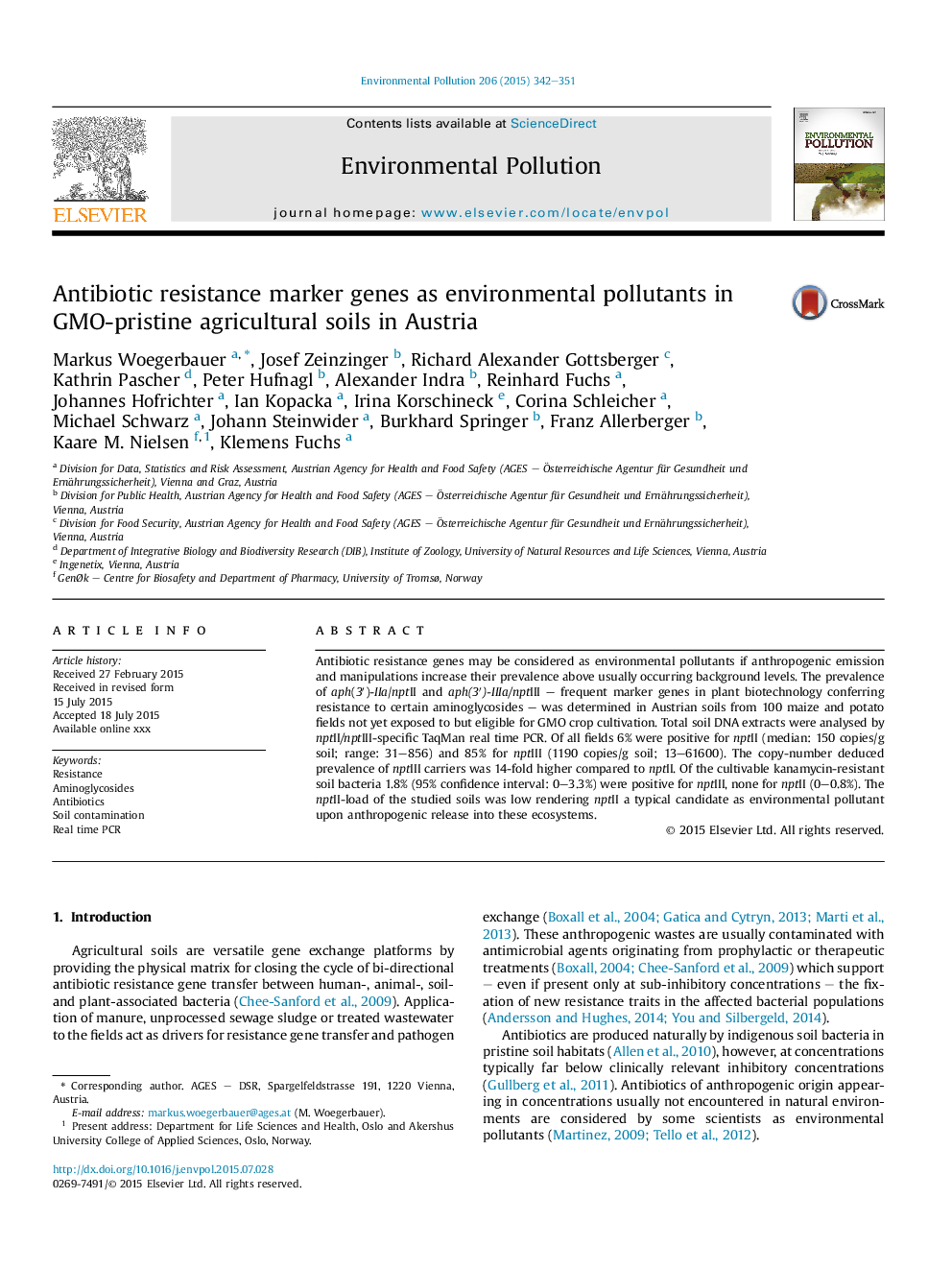| Article ID | Journal | Published Year | Pages | File Type |
|---|---|---|---|---|
| 6316793 | Environmental Pollution | 2015 | 10 Pages |
Abstract
Antibiotic resistance genes may be considered as environmental pollutants if anthropogenic emission and manipulations increase their prevalence above usually occurring background levels. The prevalence of aph(3â²)-IIa/nptII and aph(3â²)-IIIa/nptIII - frequent marker genes in plant biotechnology conferring resistance to certain aminoglycosides - was determined in Austrian soils from 100 maize and potato fields not yet exposed to but eligible for GMO crop cultivation. Total soil DNA extracts were analysed by nptII/nptIII-specific TaqMan real time PCR. Of all fields 6% were positive for nptII (median: 150Â copies/g soil; range: 31-856) and 85% for nptIII (1190Â copies/g soil; 13-61600). The copy-number deduced prevalence of nptIII carriers was 14-fold higher compared to nptII. Of the cultivable kanamycin-resistant soil bacteria 1.8% (95% confidence interval: 0-3.3%) were positive for nptIII, none for nptII (0-0.8%). The nptII-load of the studied soils was low rendering nptII a typical candidate as environmental pollutant upon anthropogenic release into these ecosystems.
Related Topics
Life Sciences
Environmental Science
Environmental Chemistry
Authors
Markus Woegerbauer, Josef Zeinzinger, Richard Alexander Gottsberger, Kathrin Pascher, Peter Hufnagl, Alexander Indra, Reinhard Fuchs, Johannes Hofrichter, Ian Kopacka, Irina Korschineck, Corina Schleicher, Michael Schwarz, Johann Steinwider,
